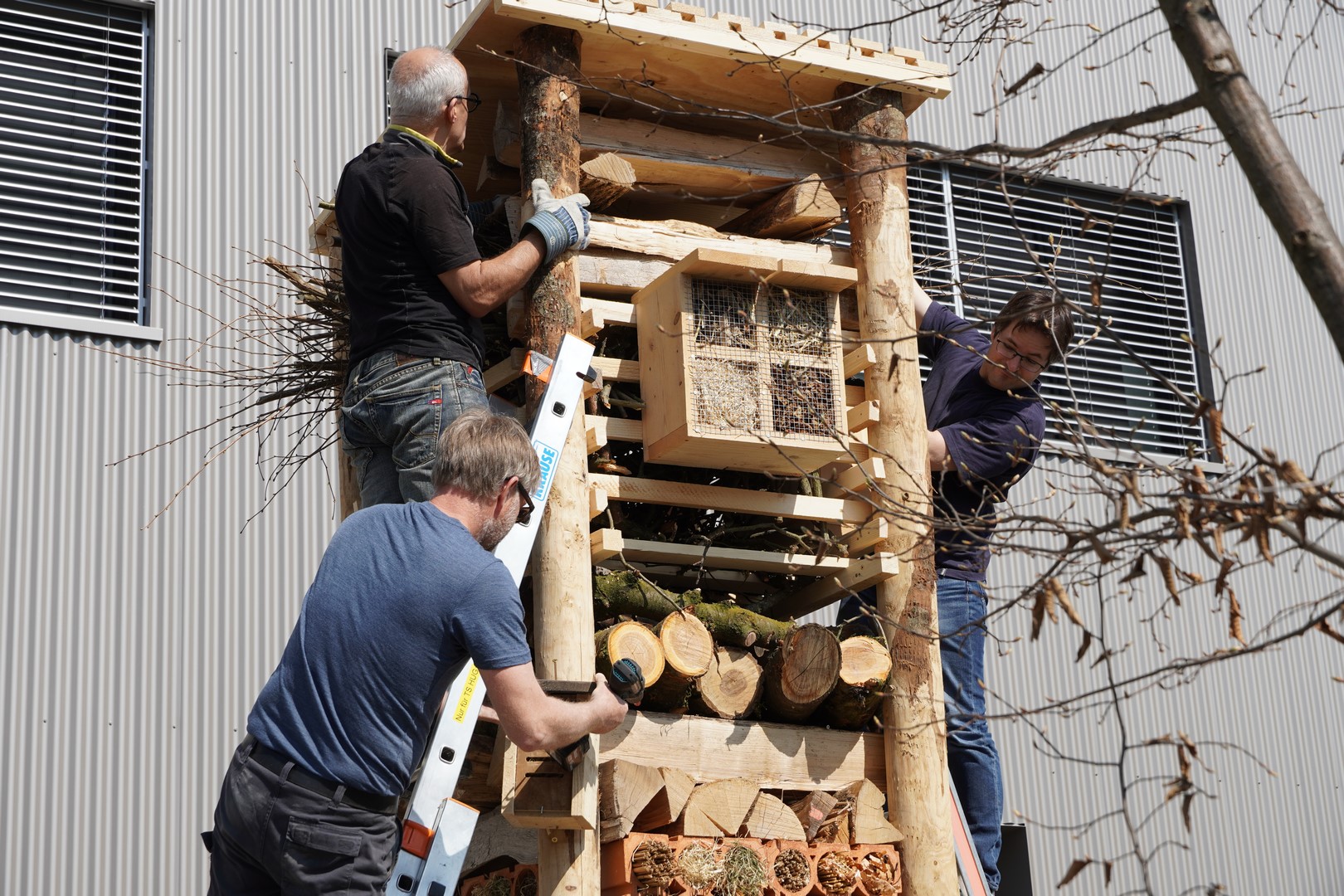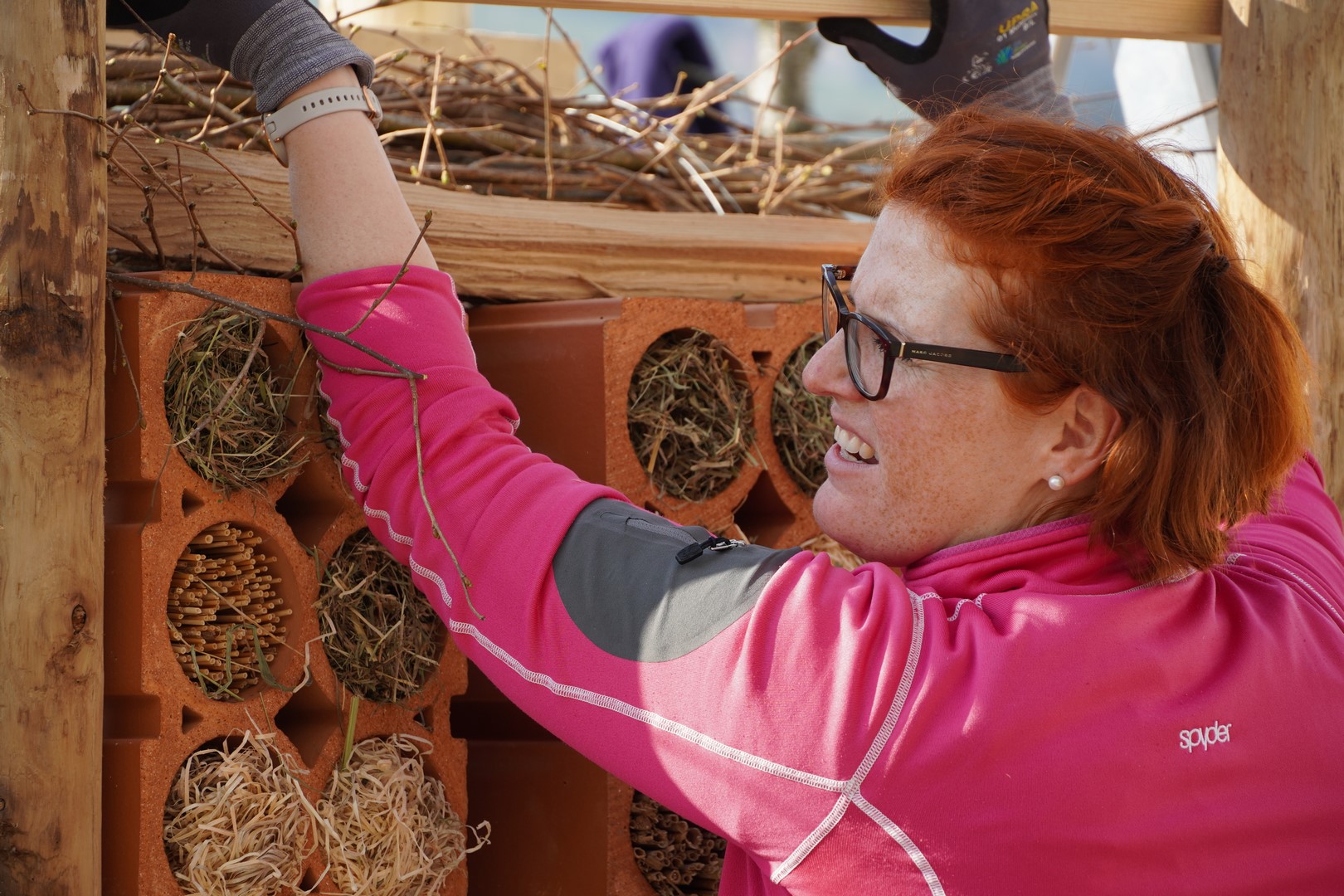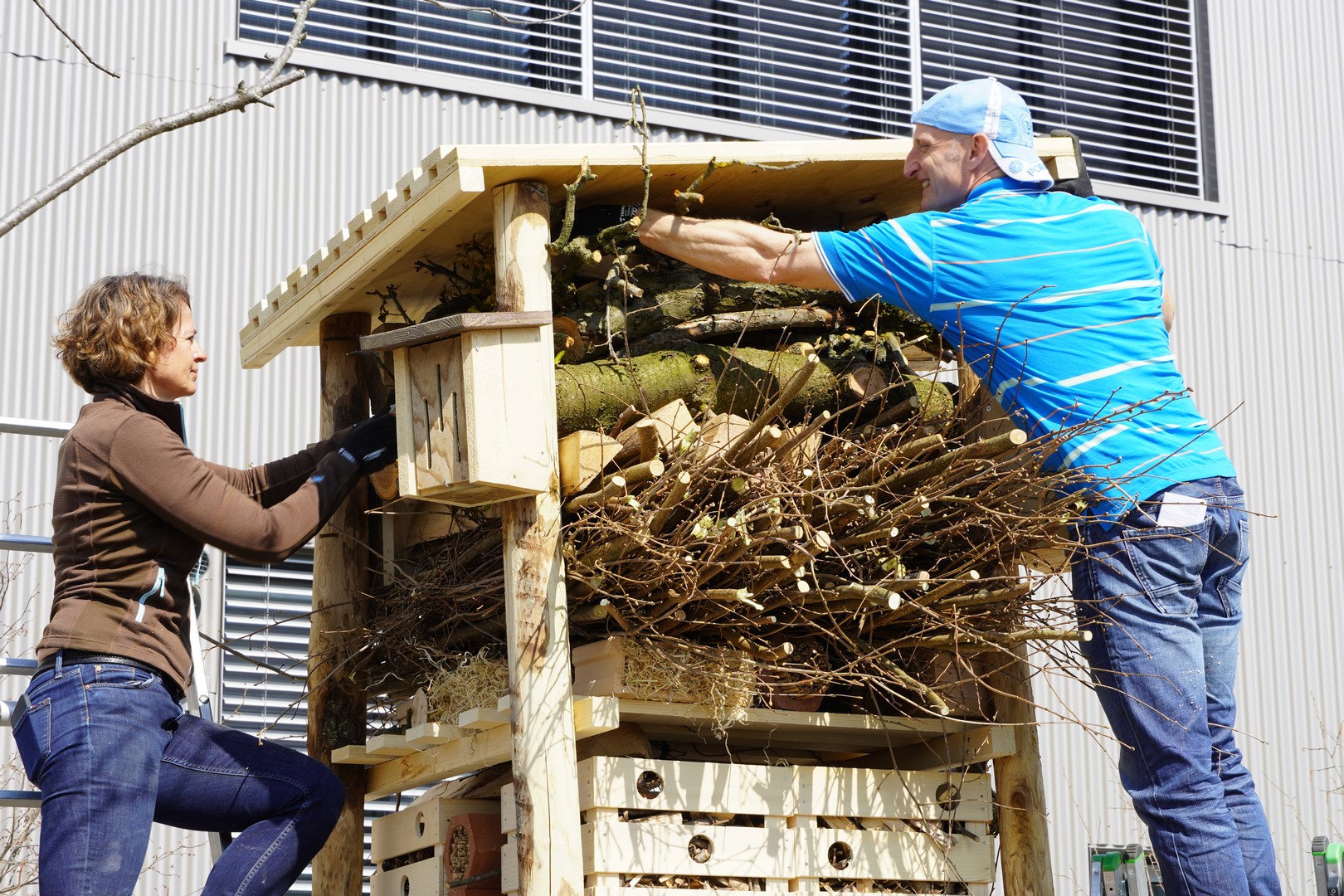
 Infrastructure & Processes
Infrastructure & Processes
Life towers
Our life towers: one square meter to protect a variety of species
In spring 2022, a group of HUG employees and some of their family members interested in the project, all supported by a team of specialists from the Archehof Hildisrieden farm, have shown true commitment and participated in the construction of two life towers at our production site in Malters. Those towers won’t go unnoticed: one is 4 meters high, the other one 3 meters.

Our motivation: committing to the local biodiversity
The extension of the backhaus resulted in the loss of part of the once very natural production site, which in turn was home to a valuable biotope. At the same time, we realised that wild bees were particularly threatened by the absence of a suitable habitat and the lack of food. We therefore took various measures to improve the situation. First, the area surrounding the production site was redesigned by our natural garden specialist. Our aim was to allow local insects, but also wild and solitary bees, which are rather picky, to satisfy their hunger for local plants. Being attentive hosts, we know how important a cosy home is and we wanted to make sure that the various new occupants we are targeting will feel at home in the long term. Therefore, we decided to build life towers.

Preserving species by protecting their biotope
A life tower is an authentic way of preserving species. The ingenious construction of only one square metre provides a compact living space for birds, insects, small mammals, lizards, plants, and fungi. The tower consists of several levels, which we have deliberately built using various materials. Not everything that flies, crawls, or buzzes appreciates the same habitat. Wild bees enjoy old wood, for example, and we have deliberately drilled holes of different sizes in logs so that a wide variety of these bees feel at home.

One habitat, several floors
Other occupants are also welcome. Chipped bark placed in wooden cages, bundles of firewood and old logs around the tower provide shelter for a variety of insects. Lacewings and ladybirds feel comfortable in wood fibre. Straw is very popular with butterflies and earwigs, and pinecones will hopefully attract numerous insects.
The roof, which was a true tour de force to put in place, protects the life tower and its inhabitants from moisture. The dense branches under the roof are ideal for blackbirds, kinglets, and grey flycatchers to nest.
On the tower structure, we placed several homes for small animals: nest boxes for cave birds, tiny houses for ladybirds, and even a bat nesting box on the 4-metre tower. Around the posts that hold up the tower, we also placed climbing plants, which are very popular with birds as a climbing and breeding site (once they got bigger), but also as a food source.

Increasing our awareness of biological diversity
It has been a pleasure to build something meaningful with a motivated team and to learn a lot about the future occupants of our life towers! We are still not sure who will move in when, though, which makes it even more exciting. We will certainly be watching our new neighbours from a distance.




